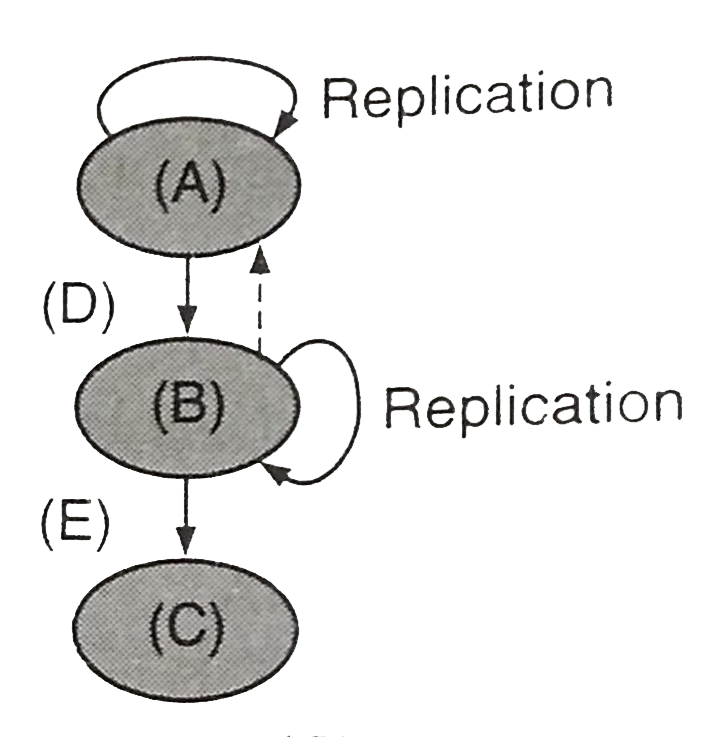The central dogma of molecular biology is represented as
DNA → r- RNA
DNA → m RNA → Proteins
RNA → DNA → Proteins
RNA → DNA → RNA → Proteins
The correct Answer is:B
Step-by-Step Solution:
1. Understanding the Central Dogma: The Central Dogma of Molecular Biology describes the flow of genetic information within a biological system. It is primarily a unidirectional process that outlines how genetic information is transferred from DNA to RNA and then from RNA to proteins.
2. Key Processes:
- Replication: DNA can replicate itself, creating identical copies of the DNA molecule.
- Transcription: The process where the DNA sequence is transcribed to produce messenger RNA (mRNA). This is the first step in the flow of genetic information.
- Translation: The process where the mRNA is translated into a protein. This occurs in the ribosome and involves the reading of the mRNA sequence to synthesize a corresponding protein.
- Reverse Transcription: In some cases, such as retroviruses, RNA can be reverse transcribed back into DNA. This is an important process in certain viral life cycles.
3. Summary of the Central Dogma:
- The flow of information can be summarized as:
- DNA → RNA (Transcription)
- RNA → Protein (Translation)
- Additionally, RNA can be converted back to DNA (Reverse Transcription).
4. Identifying the Correct Representation:
- The question asks for the representation of the Central Dogma. The correct representation includes:
- DNA → RNA → Protein
- Reverse Transcription: RNA → DNA (in retroviruses).
5. Conclusion: The Central Dogma can be represented as:
- DNA → RNA → Protein
- With the additional note that in certain cases, RNA can also be reversed back to DNA.
- Replication: DNA can replicate itself, creating identical copies of the DNA molecule.
- Transcription: The process where the DNA sequence is transcribed to produce messenger RNA (mRNA). This is the first step in the flow of genetic information.
- Translation: The process where the mRNA is translated into a protein. This occurs in the ribosome and involves the reading of the mRNA sequence to synthesize a corresponding protein.
- Reverse Transcription: In some cases, such as retroviruses, RNA can be reverse transcribed back into DNA. This is an important process in certain viral life cycles.
- The flow of information can be summarized as:
- DNA → RNA (Transcription)
- RNA → Protein (Translation)
- Additionally, RNA can be converted back to DNA (Reverse Transcription).
- The question asks for the representation of the Central Dogma. The correct representation includes:
- DNA → RNA → Protein
- Reverse Transcription: RNA → DNA (in retroviruses).
- DNA → RNA → Protein
- With the additional note that in certain cases, RNA can also be reversed back to DNA.
Similar Questions
Knowledge Check
Central dogma in molecular biology is :
ARNA → DNA →ProteinBRNA → Protein → DNACDNA→ RNA → ProteinDDNA → Protein →RNACentral dogma of molecular biology was proposed by
AF. CrickBH. TeminCD. BaltimoreDM. WilkinsWhich one of the following does not follow the central dogma of molecular biology ?
APeaBHIVCMucorDChlamydomonas
Diagram represents "central dogma" of molecular biology. Choose correct combination of labelling.

View SolutionWhich of the following organism does not follow the central dogma of molecular biology ?
View SolutionWhich one of the following does not follow the central dogma of molecular biology
View SolutionThe diagram represents the "central dogma " of molecular biology . Choose the correct combination of labelling :

View SolutionMolecular biology is the study of
View Solution
